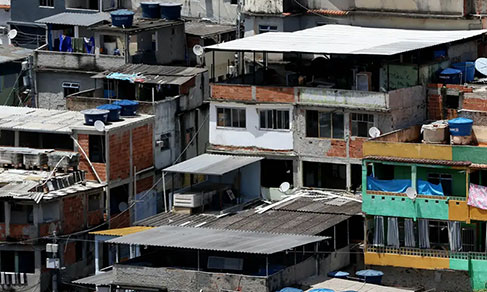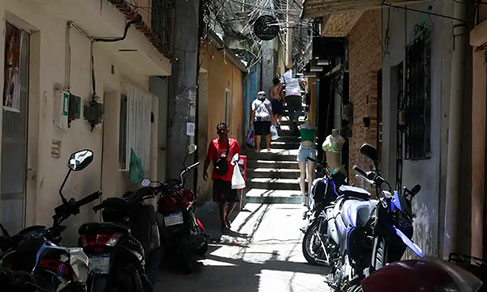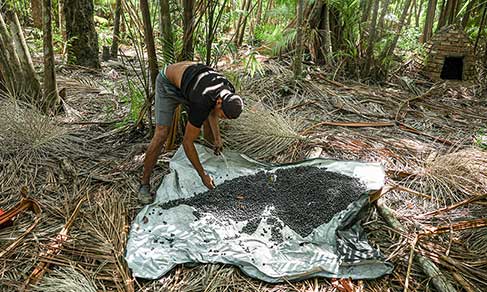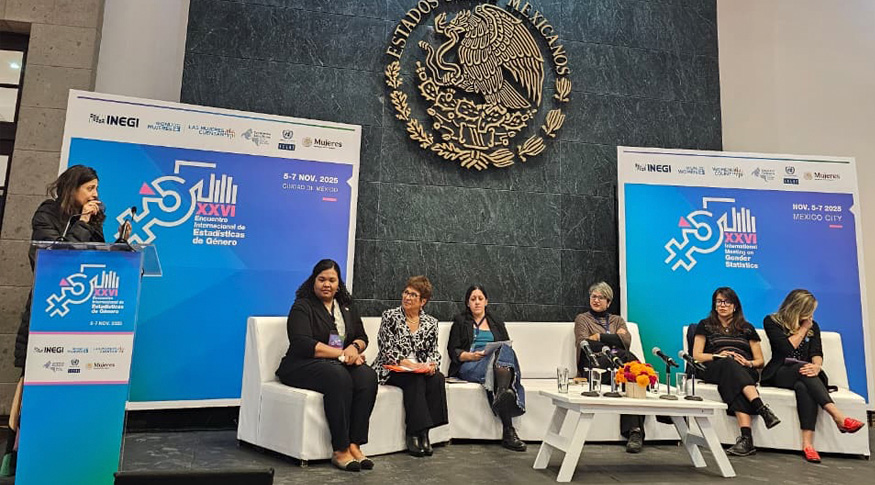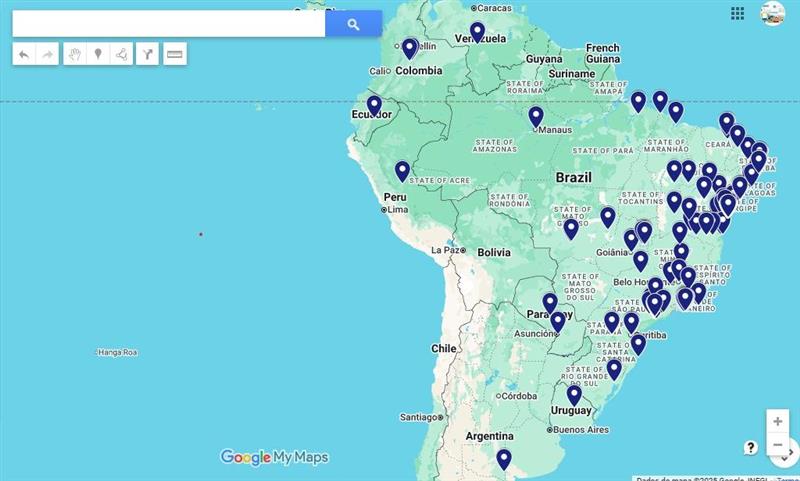Profile of States and Municipalities
Three out of four municipalities didn´t have any plan for early childhood in 2023
October 31, 2024 10h00 AM | Last Updated: November 04, 2024 04h32 PM
Highlights
- According to MUNIC, 26.6% (1,484) of the municipalities reported to have a Municipal Plan for Early Childhood (PMPI) in Brazil in 2023. The highlights were in the Northeast and North regions, with 50.8% and 37.3% and the state of Ceará, in which 97.8% of the municipalities had a PMPI.
- The two major policies or programs to foster the rights of children aged between 0 and 6 years adopted by the municipalities were the provision of early childhood education (75.8%) and access to health services (74.6%).
- In 2023, only 432 (7.6%) of the municipalities provided day care center aid, highlighted by the seat acquired by the government, which corresponds to 58.6% of those with the aid.
- The proportion of municipalities that had an organizational structure in the area of food and nutritional security increased from 36.6% in 2018 to 50.3% (2,799) in 2023. Most of them (2,433) were in a sector subordinate to another secretariat.
- In 2023, 18.8% (1,048) of the municipalities had a Municipal Plan for Food and Nutritional Security, an instrument with municipal actions and guidelines aimed at respecting, protecting, promoting and providing human rights to an appropriate feeding. In the municipalities with more than 500,00 inhabitants, the proportion of those that had it changed from 34.8% in 2018 to 48.8% in 2023.
- All the 26 Federation Units reported to have acquired from the family farming and school feeding programs. The acquisitions from family farming were made through the Program for Food Acquisition (PAA), in 21 of them also through the National Program for School Feeding (PNAE) and, in 16 of them, jointly with their own programs. Only Rio Grande do Sul did not exert activities of food and nutritional education.
- In 79.8% (4,445) of the Brazilian municipalities at least one action of rural productive inclusion was developed in 2023, a higher percentage than that recorded in 2018, when it hit 71.4% (3,979).
- In 54.9% (3,056) of the municipalities at least one action of urban productive inclusion was developed in 2023, a higher percentage than 41.9% (2,332) registered in 2018.
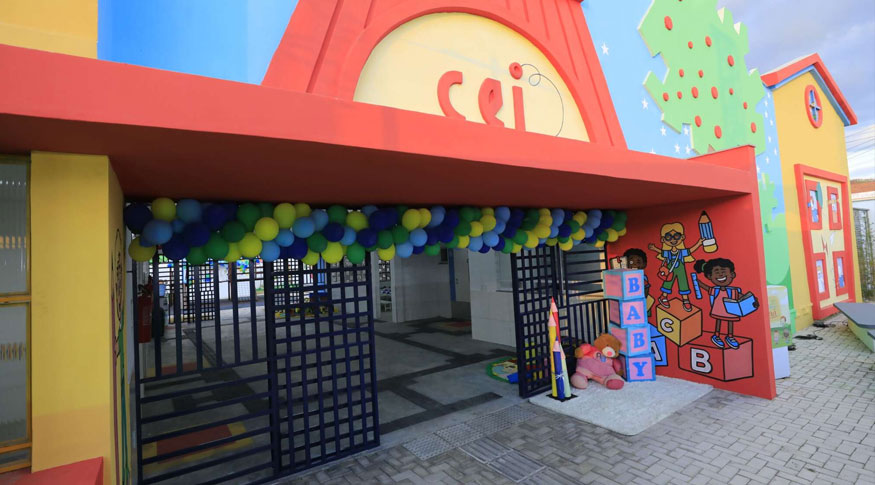 In 2023, 26.6% of the municipalities had a Municipal Plan for Early Childhood; proportion was 97.8% in Ceará - Picture: Government of Ceará
In 2023, 26.6% of the municipalities had a Municipal Plan for Early Childhood; proportion was 97.8% in Ceará - Picture: Government of Ceará
After seven years of approval of the Legal Framework for Early Childhood (Law 13,257), 26.6% (1,484) of the Brazilian municipalities had a Municipal Plan for Early Childhood (PMPI) in 2023. The highlights were in the Northeast and North regions, where 50.8% and 37.3% reported having a plan, especially the state of Ceará, with 97.8%. On the other hand, the South Region registered a low percentage of municipalities with a plan (9.3%).
These data comprise the chapter on Early Childhood of the Survey of Basic Municipal Information (MUNIC). Eight themes were investigated in this edition of MUNIC and in the Survey of Basic State Information (ESTADIC): early childhood, food security, labor and productive inclusion, human resources, policies for women, public security, human rights and social assistance. Read also the news "From 2019 to 2023, number of municipalities with an organizational structure for Human Rights decreases".
It should be mentioned that the state of Rondônia did not answer ESTADIC until the end of the data collection. Therefore, information related to this Federation Unit is not included in the results.
"Regional differences emphasize the highest percentages in the Northeast and North regions. It might be directly influenced by the participation of the municipalities in the UNICEF Seal initiative, which aims at supporting cities of the Brazilian Semiarid and Legal Amazon in strengthening municipal public policies assuring rights of children and teenagers. This initiative encourages participants to develop Municipal Plans for Early Childhood based on a guidebook made available by UNICEF in 2021," highlights José Eduardo Trindade, author of the chapters on early childhood in MUNIC and ESTADIC 2023.

Ceará, which registered the highest percentage of municipalities with a Municipal Plan for Early Childhood, was followed by Rio Grande do Norte (59.3%), Maranhão (54.4%) and Pernambuco (51.9%). Roraima, which showed 46.7% of its municipalities with a PMPI, should be highlighted as well. The states with less than 10% of the municipalities with a plan were: Minas Gerais (9.3%), Goiás (8.9%), Espírito Santo (7.7%), Paraná (7.3%) and Santa Catarina (5.8%).
In terms of the State Plan for Early Childhood (PEPI), 18 states had a plan, either regulated or not by a legal instrument, or were developing it, whereas eight of them informed not having a plan.
A similar distribution to the municipalities with a Municipal Plan for Early Childhood occurs for the municipalities that had an Inter-sectoral Committee of Public Policies for Early Childhood, like, for instance, Ceará, where 97.3% of the municipalities counted with a committee. The author explains that the Committees are responsible for coordinating and articulating actions and policies aimed at early childhood, assuring integration and synergy among the different sectors involved.
Trindade also highlights the central role of the Committees for the PMPI, as they are responsible for following up the implementation of the plan, monitoring the results and assessing the impact of the policies on the promotion of rights of early childhood, allowing adjustments and continuous improvements.
Early childhood education and health services are the most provided actions in the municipalities
In policies or programs that promote the rights of children aged between 0 and 6 years, the major actions or measures adopted by the municipalities were the provision of early childhood education (75.8%) and access to health services (74.6%). The former was more frequent in the Southeast, Northeast and North regions, with 89.3%, 79.2% and 78.4%, respectively, whereas the South (58.6%) and Central-West (55.9%) had the lowest percentages. In the access to health services, the highlights were the Northeast and North regions, with 84.5% and 82.9%, respectively, followed by the Southeast (74.1%), South (63.1%) and Central-West (59.5%).
In terms of Federation Units, Minas Gerais (99.7%) stood out in terms of provision of early childhood education and Pernambuco (95.7%), in terms of access to health services.
Only 432 municipalities provided day care aid in 2023
Day care aid or voucher for early childhood education is the value transferred to families with children at early childhood education age that cannot enroll them in public day care, in order to enroll them in private early childhood centers.
In 2023, 432 (7.6%) of the municipalities provided day care aid, mainly through seats acquired by the government (58.6%). Only 6.0% provided cash as aid and 3.2% opted for providing scholarships. On the other hand, 38.4% looked for other forms to provide benefits for early childhood education.
Day care aid was more frequent in the municipalities between 100,000 and 500,000 inhabitants (14.0%), as well as in the South Region (10.3%). Amapá stands out, with 68.8% of the municipalities.
Half of the municipalities and 26 states counted with an organizational structure for food security
According to MUNIC 2023, the proportion of municipalities that had an organizational structure in the area of food and nutritional security increased from 38.6% in 2018 to 50.3% in 2023. This theme has been treated by the survey in three previous editions: 2012, 2014 and 2018.
In contrast, ESTADIC 2023 concluded that all the 26 Federation Units investigated had an organizational structure in the area of food and nutritional security. In 2018, all the 27 Federation Units had such structure.
Two thirds of the municipalities did not have any law on food security
Of the 5,570 Brazilian municipalities, 65.2% (3,631) reported not having a municipal law on food security, a drop of nearly 20 percentage points in relation to 2012 (85.1%). In some states, more than half of the municipalities reported having such legislation, highlighted by Paraná (86.0%), followed by Pará (67.4%), Maranhão (59.4%) and Ceará (59.8%). In turn, the highest percentage of municipalities without such law was in the Central-West Region (89.1%), led by the state of Goiás (92.3%).
For 32.9% (1,832) municipal budget resources were available to fund policies of food and nutritional security (except for compensations of covenants with the federal administration), a higher percentage than that of 22.9% (1,275) recorded in 2018. Concerning the Brazilian Major Regions, the North and Northeast reported the highest percentages, both with 35.1%.
In 2023, 18.8% (1,048) of the municipalities had a Municipal Plan for Food and Nutritional Security, an instrument with municipal actions and guidelines aimed at respecting, protecting, promoting and providing the human right to an appropriate feeding for all persons, a higher percentage than that found in 2018 (10.2%). The municipalities with more than 500,000 inhabitants stood out, as the proportion of those that had it changed from 34.8% in 2018 to 48.8% in 2023.
Among other actions carried out by the municipalities in the area of food security, a large number of them had a School Feeding Program, which provides feeding and carry out actions of food education to students of the public network, present in 5,372 municipalities (96.4%). Although in a smaller number, but also carried out in schools, school garden programs were present in 2,461 municipalities (44.2%).
"Even with the high number of those that reported not having a municipal law (3,631) or budget resources (3,739) for the development of policies in the area of food and nutritional security, actions were carried out in a large number of municipalities, highlighting those of education nature, developed either inside or outside the school environment," notes Rosane Oliveira, author of the chapters on Food Security in MUNIC and ESTADIC 2023.

Roraima, Piauí, Sergipe and Goiás remain without a state plan of food security
ESTADIC 2023 investigated the existence of a State Plan of Food and Nutritional Security in 21 Federation Units (more six than in 2018). In all the editions of the survey, the states of Roraima, Piauí, Sergipe and Goiás reported not having a plan.
Seven states reported not having state budget resources to fund policies of food and nutritional security (except for compensations of covenants with the federal administration), a higher number than that obtained in 2018, when only Acre and Santa Catarina reported not having such resources.
Among the actions of food and nutritional security, all the 26 Federation Units reported to have carried out public acquisitions from family farming and school feeding program. Only Rio Grande do Sul did not exert activities of food and nutritional education. Maintenance of food banks and community kitchens were the least accomplished actions.
"It is important to notice that, even in a scenario of budget restriction for food security policies in most Federation Units, an improvement in the indicators of organizational structure, implementation of public management instruments and even programs and actions towards food and nutritional security were observed in the Brazilian federative entities," explains Rosane Oliveira.
Four out of five municipalities developed actions of productive inclusion
In 79.4% (4,420) of the municipalities developed some action of productive inclusion, growing against the rate of 67.4% (3,756) registered in 2018. This rise was widespread along all the regions and classes of municipality size, except for those with more than 500,000 inhabitants, which dropped from 100% to 97.6%.
In the 2018 and 2023 editions, MUNIC investigated whether the municipalities developed actions, programs or projects of: rural productive inclusion; professional qualification and intermediation of workforce; urban productive inclusion; credit, micro-credit and insurance; and generation of labor and income.
"The full set of policies of productive inclusion aims at providing individuals, in situation of social and economic vulnerability, with skills and knowledge that allow their insertion in the production of goods and services, i.e., that promote their integration in the world of labor and income, overcoming poverty and economic inequality," explains Kátia Cilene, author of the chapters on Productive Inclusion Labor in MUNIC and ESTADIC 2023.
In 79.8% (4,445) of the Brazilian municipalities at least one action of rural productive inclusion was developed in 2023, a higher percentage than that recorded in 2018, when it hit 71.4% (3,979). Rural productive inclusion aims at strengthening the activities carried out by families of the family farming in social vulnerability, aiming at increasing their productive capacity and inserting their products in the consuming markets.
Among the projects of rural productive inclusion investigated in 2023, the acquisition of food in the scope of the Program for Food Acquisition (PAA) or of the National Program for School Feeding (PNAE) were the most frequent in all the regions and municipalities with up to 500,000 inhabitants.
In the municipalities with more than 500,000 inhabitants, the projects that most stood out were the actions of technical assistance and rural extension and the actions to foster productive activities.
Between 2018 and 2023, the proportion of the municipalities that developed actions, programs or projects of professional qualification and intermediation of workforce increased from 59.7% (3,325) to 71.7% (3,995), respectively.
In 54.9% (3,056) of the municipalities at least one action of urban productive inclusion was developed in 2023, a higher percentage than 41.9% (2,332) registered in 2018. Urban productive inclusion articulates actions and programs that favor the insertion in the labor world through formal employment, entrepreneurship or solidarity economy enterprises.
In 2023, 37.1% (2,067) of the municipalities developed at least one action of credit, micro-credit and insurance, a growth in relation to the percentage of 32.5% (1,808). The advance was noticed in all the classes of municipality size and in nearly all the regions, except for the Central-West, where the proportion of municipalities that carried out such action fell from 43.7% (204) in 2018 to 27.2% (127) in 2023.
"Actions of granting credit, micro-credit and insurance, as well as projects of generation of labor and income, aim at cooperating with different solutions already practiced by individuals in situation of social and economic vulnerability, as a way to guarantee income," develops Cilene.
In 62.3% (3,469) of the municipalities, actions of generation of labor and income were carried out in 2023, a growth in relation to the rate of 55.0% (3,063) recorded in 2018. This increase was also registered in all the regions and in nearly all the classes of municipality size, except for those with more than 500,000 inhabitants.
Number of persons employed in the municipal administration grows 11% in two years
The number of persons employed in the municipal direct and indirect administration was 7,334,402 in 2023 and 6,549,551 in 2021, which corresponds to a growth of 11.0% in the period. The proportion of municipal servants in the direct administration represented 95.6% of the total in 2021, whereas the indirect administration accounted for only 4.4% of the personnel of the municipal public administrations. Of the 5,570 Brazilian municipalities, 25.0% (1,391) had indirect administration.
In direct administration, persons without a permanent bond (persons granted by other public offices, self-employed service providers, volunteers, among others), which were 20.1% (1,269,908) in 2021, rose to 23.8% (1,667,192) in 2023. Those only commissioned (who are not public servants) represented 9.1% (578,188) in 2021 and 9.6% (671,921) in 2023. Servants ruled by the Consolidation of Labor Laws (CLT) represented 7.5% (474,062) in 2021 and 7.3% (510,531) in 2023.
In the indirect administration, those without a permanent bond represented 13.4% (38,564) in 2021 and 14.8% (48,884) in 2023. Those only commissioned were 8.1% (23,384) in 2021 and 8.4% (27,854) in 2023.
ESTADIC shows growth of 3.0% in the number of persons employed in the state administration
The number of persons employed in the state direct and indirect administration was 2,986,198 in 2023 and 2,892,720 in 2021, which corresponds to a growth of 3.0% in the period. The proportion of state servants in the direct administration was 86.6% (2,585,015) of the total in 2023, whereas the indirect administration accounted for 13.4% (401,183) of the personnel of the state public administrations. All the Federation Units that answered the questionnaire had indirect administration in 2023.
The share of the personnel without a permanent bond in the direct administration, which was 18.0% (444,473) in 2021, rose to 23.2% (599,315) in 2023. Those only commissioned represented 3.8% (94,217) in 2021 and the proportion remained the same in 2023: 3.8% (99,315). Those ruled by the CLT were negligible, representing 0.6% (15,655) in 2021 and 0.4% (10,393) in 2023.
In the indirect administration, statutory servants were also the majority: 44.5% (185,449) in 2021 and 42.6% (170,851) in 2023, though the distribution differs from that recorded in the direct administration, in which the highest proportions were registered by statutory servants and those without permanent bond. In the indirect administration, the second highest proportion corresponded to CLTers, which were 35.7% (148,998) in 2021 and 35.6% (142,293) in 2023. Concerning the other members, those without permanent bond changed from 10.3% (42,748) in 2021 to 11.0% (44,172) in 2023, and those only commissioned, from 7.3% (30,381) in 2021 to 8.0% (32,193) in 2023.
More about the survey
MUNIC and ESTADIC periodically survey information on the structure, dynamics and operation of municipal and state public institutions. The investigation unit is the municipality and, the main informant, the city administration, in the case of MUNIC, and the state administration, in the case of ESTADIC, through several sectors that comprise them. Next November 28, the IBGE will release the supplement on basic sanitation of MUNIC 2023.


